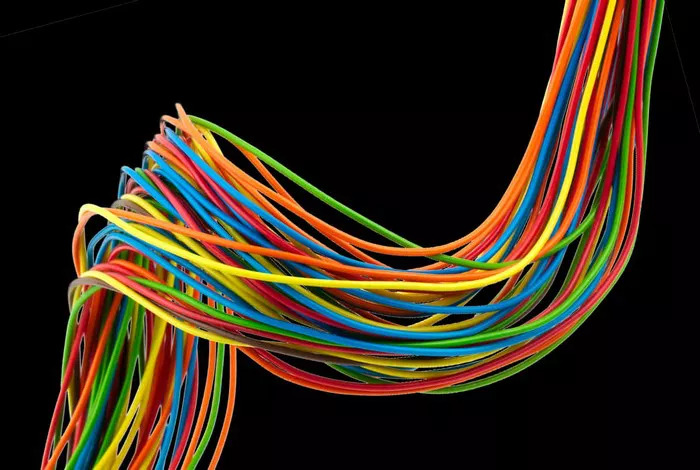In the field of electrical and mechanical engineering, wire insulation plays a critical role in ensuring safety, efficiency, and durability. One of the most widely used and high-performance insulation materials is cross-linked polyethylene (XLPE). XLPE wire has gained significant popularity across various industries due to its excellent thermal, mechanical, and electrical properties. This article provides a comprehensive understanding of XLPE wire, its characteristics, advantages, applications, and how it compares with other types of insulated wires.
What is XLPE Wire?
XLPE wire refers to electrical wire that is insulated with cross-linked polyethylene. XLPE is a type of polyethylene polymer that has been chemically or physically treated to create a cross-linked molecular structure. This process significantly enhances the material’s thermal stability, mechanical strength, and electrical resistance compared to conventional polyethylene.
The cross-linking process transforms the polymer into a thermoset material, meaning it retains its shape and properties even at high temperatures. This makes XLPE an ideal choice for applications where durability and resistance to harsh conditions are required.
Characteristics of XLPE Wire
XLPE-insulated wires offer several key properties that distinguish them from other insulation materials:
High Thermal Resistance – XLPE can withstand temperatures up to 90°C in continuous operation and up to 250°C in short-circuit conditions without deformation.
Excellent Electrical Properties – XLPE has a low dielectric constant, high dielectric strength, and low dielectric loss, making it suitable for high-voltage applications.
Improved Mechanical Strength – The cross-linked structure enhances tensile strength, impact resistance, and flexibility.
Moisture and Chemical Resistance – XLPE has excellent resistance to moisture, oils, chemicals, and environmental stress cracking.
Long Service Life – Due to its stability and resistance to aging, XLPE wires have a longer operational lifespan compared to PVC-insulated wires.
Eco-Friendly – XLPE does not release toxic gases when exposed to high temperatures, making it a safer and more environmentally friendly option.
Manufacturing Process of XLPE Wire
The production of XLPE-insulated wire involves the following steps:
Extrusion of Polyethylene – The polyethylene base is extruded over the conductor (copper or aluminum) in a uniform layer.
Cross-Linking Process – The polyethylene undergoes cross-linking, which can be achieved using different methods:
Peroxide Method: The material is treated with organic peroxides under high temperatures.
Silane (Moisture Cure) Method: Silane compounds are introduced, and the polymer is exposed to moisture to facilitate cross-linking.
Electron Beam Method: High-energy electron radiation is used to induce cross-linking.
Cooling and Testing – The wire is cooled, cut, and subjected to various quality control tests to ensure compliance with industry standards.
Advantages of XLPE Wire Over Other Insulation Materials
XLPE wire is often compared with PVC (polyvinyl chloride) and other insulation materials. Here’s why XLPE stands out:
Higher Temperature Resistance – XLPE can operate at higher temperatures compared to PVC, which typically has a maximum temperature limit of 70°C.
Better Electrical Performance – XLPE has superior dielectric properties, making it ideal for high-voltage applications.
Greater Environmental Resistance – Unlike PVC, which can degrade under prolonged exposure to UV radiation and chemicals, XLPE maintains its integrity.
Higher Mechanical Strength – XLPE withstands mechanical stress, impact, and abrasion better than many other insulating materials.
Reduced Weight – XLPE wires are generally lighter than their PVC counterparts, reducing the overall weight of cable systems.
Applications of XLPE Wire
Due to its superior properties, XLPE wire is used in a wide range of applications, including:
Power Transmission and Distribution – XLPE-insulated cables are commonly used in high-voltage power transmission and distribution networks.
Industrial Wiring – Factories and industrial plants use XLPE wiring to withstand harsh conditions, including high temperatures and exposure to chemicals.
Building and Construction – Used in residential, commercial, and infrastructure projects for safe and durable electrical installations.
Automotive and Transportation – XLPE wires are used in automotive wiring, railway signaling, and aerospace applications due to their heat resistance and mechanical durability.
Renewable Energy – Solar and wind energy systems rely on XLPE cables for reliable power transmission under varying environmental conditions.
Marine and Underground Cabling – XLPE’s moisture resistance makes it ideal for submarine and underground power lines.
XLPE vs. PVC: Which One Should You Choose?
When selecting insulation for electrical wires, the choice between XLPE and PVC depends on the application requirements:
- For high-temperature applications, XLPE is preferred due to its superior heat resistance.
- For cost-sensitive applications, PVC is more economical but lacks the durability and longevity of XLPE.
- For environments exposed to chemicals and moisture, XLPE performs better than PVC.
- For high-voltage transmission, XLPE is the standard choice due to its excellent electrical properties.
Conclusion
XLPE wire is a highly reliable and efficient solution for various electrical applications due to its outstanding thermal, mechanical, and electrical properties. Its ability to withstand high temperatures, moisture, and environmental stress makes it a preferred choice in industries ranging from power transmission to automotive and renewable energy. While XLPE wires may be costlier than PVC-insulated wires, their long service life and superior performance often justify the investment.
Understanding the benefits and applications of XLPE wire can help engineers, electricians, and industry professionals make informed decisions when selecting electrical wiring for their specific needs.

